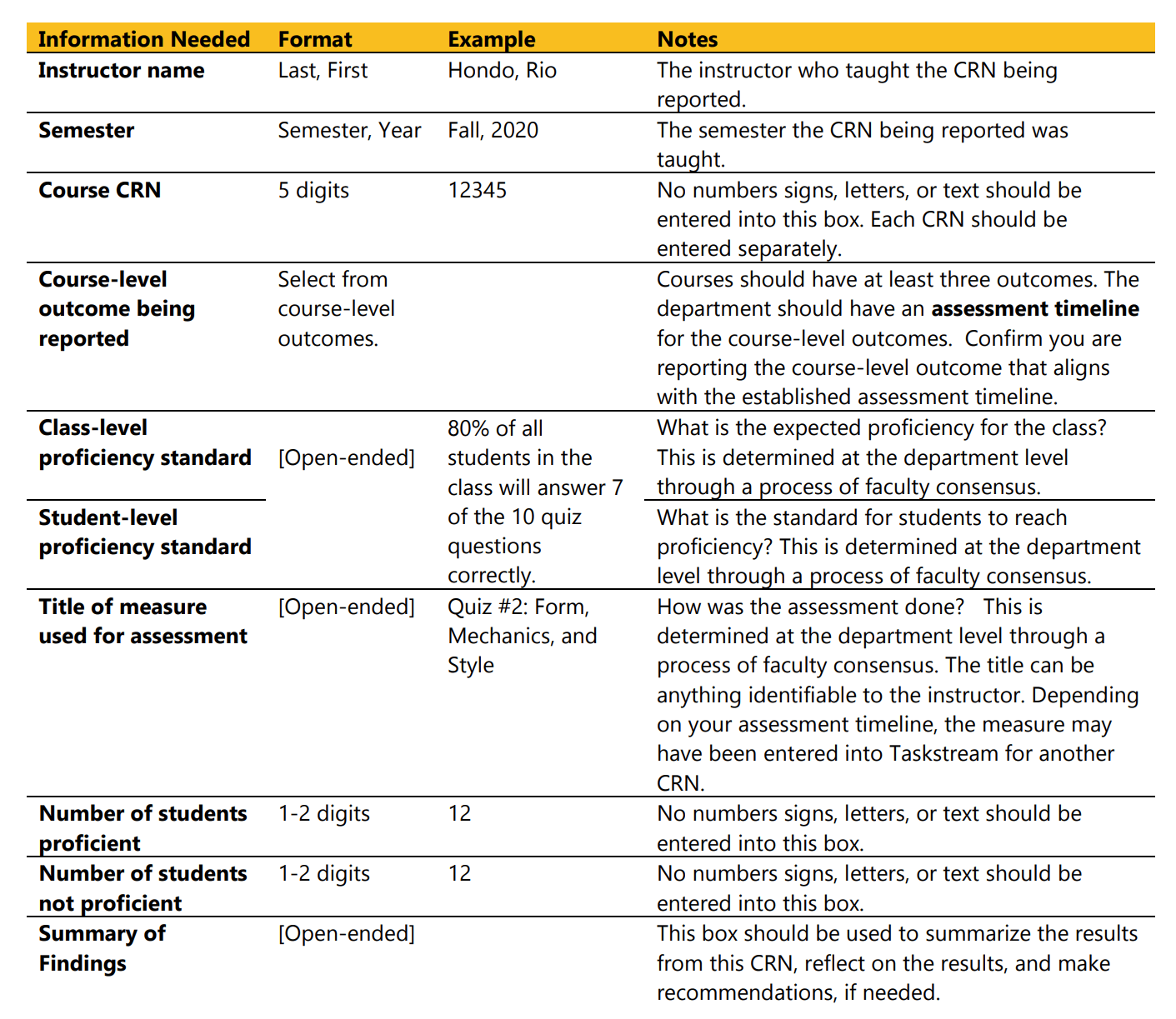Instructional Outcomes
Data needed:

There are two parts to reporting CLO data in Taskstream:
Remember:
Directions: For Taskstream Guide click or tap here.
Data for at least one section of each course that is taught (e.g., English 100) should be reported each academic year. If there are multiple sections of a given course offered in an academic year, data from only one section may be needed. Although not required, winter and summer term outcomes assessment results also may be reported.
Faculty members often report on multiple sections so that they may better evaluate outcomes across different modalities (e.g., synchronous class results versus asynchronous class results); class offering days/times (e.g., 8 a.m. class results versus 11:15 a.m. class results); or semesters (e.g., fall term versus spring term class results). Additional reporting also may be helpful to validate further and provide additional evidence for resource requests in the close-the-loop process.
Data for at least one course-level outcome should be reported for each course. Each department/division has determined which CLOs will be reported, and when. This determination is vital to ensure that all CLOs for a course are equally assessed within a six-year period. The tracking of this information is managed in the course outcomes assessment timeline (COAT) which is submitted and stored in Taskstream.
| DANC 199 | 17–18 | 18–19 | 19–20 | 20–21 | 21–22 | 22–23 | |
|---|---|---|---|---|---|---|---|
| Presented with viewing assignments, students will articulate their connection to dance as related to key historical dance figures, dance works, and/or dance trends. | X | X | |||||
| In written assignments, students will identify and compare various dance genres from an anthropological, sociological, and aesthetic viewpoint. | X | X | |||||
| Presented with a live or recorded dance performance of historical significance, students will conduct an analysis based on Laban’s categories of body, effort, shape, and space, and formulate an opinion about the choreographic intent. | X | X |
| DANC 199 | 17–18 | 18–19 | 19–20 | 20–21 | 21–22 | 22–23 | |
|---|---|---|---|---|---|---|---|
| Presented with viewing assignments, students will articulate their connection to dance as related to key historical dance figures, dance works, and/or dance trends. | X |
| X | ||||
| In written assignments, students will identify and compare various dance genres from an anthropological, sociological, and aesthetic viewpoint. | X | X | |||||
| Presented with a live or recorded dance performance of historical significance, students will conduct an analysis based on Laban’s categories of body, effort, shape, and space, and formulate an opinion about the choreographic intent. | X | X |